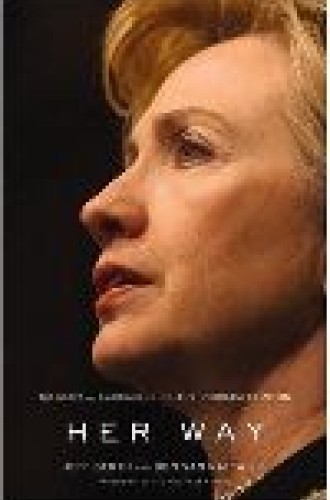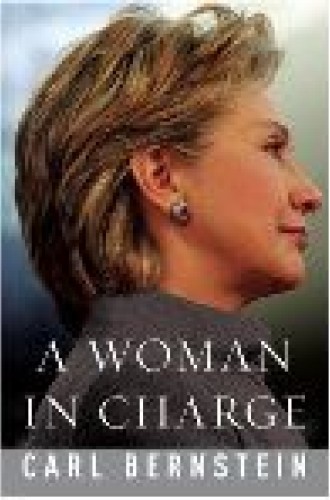Judging Hillary
No figure is more polarizing than Hillary Rodham Clinton—or more misrepresented. Partly because of her complex personality and partly because of the aspirations and aspersions projected upon her by others, Clinton’s character remains difficult to discern. These two works by Pulitzer Prize–winning journalists offer remarkably different portraits.
Both biographies are comprehensive in scope, exploring Clinton’s life from childhood to the present. Neither author was granted an interview by either Hillary or Bill Clinton. Both rely on a host of other interviews, a voluminous public record and the Clintons’ respective autobiographies. Though exhaustively researched, the two works use a significant number of anonymous sources, requiring the reader frequently to trust unknown observers and rely on the judgments of these veteran political reporters.
Hillary’s early national prominence, stemming from her rousing Wellesley commencement speech (covered in the June 1969 issue of Life magazine) and her legal work on the Nixon impeachment, made her in many people’s eyes more promising politically than Bill. Particularly fascinating is her transformation from a conservative “Goldwater Girl” to a Democratic Party activist. With her “mind-conservative and heart-liberal” stance, to cite her words, she oscillated between ideological passion and political pragmatism. It is clear that she never was, and that she is not now, the radical liberal that some on the right and left want her to be. Throughout her life (and well before her relationship with Bill) she has tried to work within the political system, rejecting the more combative and radical approaches of some of her contemporaries.
Each book gives us behind-the-scenes views of the Clintons’ years in Arkansas and Washington, focusing on Hillary’s role in Bill’s campaigns and governance and in managing the legal defense in the serial scandals that marked the Clinton presidency. I was repeatedly struck by the heights and depths of what Hillary has experienced: she has survived personal and professional traumas that would have destroyed nearly anyone else—all in the public eye.
Regarding character, Gerth and Van Natta focus on Hillary’s legal career. They point to an underwhelming trial record marked by incomplete research, evidence that she padded her billing in the Whitewater affair, and a troubling willingness to discard prior stances (such as for workers’ rights) to win support of wealthy business clients. In their telling, these qualities resurface later in Senator Clinton’s apparent failure to read the classified National Intelligence Estimate (which was skeptical regarding Iraq’s WMD threat), in her bending of ethics rules in the White House and Senate, and in the ideological flexibility that has characterized her positions on the Iraq war. (Senator Clinton has not explicitly called her initial support for the war a mistake, and the authors note that she opposed the one measure that required the UN-verified, multilateral approach that she has since said she originally advocated for dealing with Iraq.)
Gerth and Van Natta portray Hillary as a machine of ambition, joined politically to Bill by a secret prenuptial pact that envisioned a detailed roadmap to the White House for both. She is presented as the calculating master of Bill’s ascendency, the one who provided the discipline and aggression necessary to overcome every obstacle regardless of the cost to their friendships or their marriage.
The most complicated aspect of Hillary’s life—her marriage to Bill—is depicted by Gerth and Van Natta as a Faustian bargain designed to further her own political ambition. In their assessment, this will to power precludes her from admitting mistakes. To admit mistakes would not only jeopardize her “idealized view of herself, that she can do no wrong, as long as whatever mistake she made was in the pursuit of a larger good cause,” but would also provide her enemies with ammunition.
Whereas Gerth and Van Natta make ambition the explanatory key to her life, Carl Bernstein gives credence to other factors, especially her religious faith and her genuine love for Bill. “Aside from her family, Hillary’s Methodism is perhaps the most important foundation of her character.” Refuting the charge that Hillary’s expressions of faith are a recent opportunistic development, Bernstein repeatedly notes the shaping role of her Methodist upbringing, from her youth group’s attendance at a 1961 rally led by Martin Luther King Jr. to her Sunday school’s involvement with migrant workers, to say nothing of the way faith provided support during the White House scandals.
Bernstein presents some striking vignettes of Hillary’s religious life—she cleaned the church altar on weekends, pored over the Bible while recruiting Mexican-American voters in Texas for McGovern’s presidential campaign in 1972, and gave a talk in 1981 in North Little Rock on the topic, “Women Armed with the Christian Sword—to Build an Army for the Lord.”
Don Jones, Clinton’s pastor when she was a teenager in Park Ridge, Illinois, has played a significant, ongoing role in her life. Beyond cultivating a perspective of “faith in action” via exposure to the social teachings of Wesley, Niebuhr and Bonhoeffer (as well as the radical work of Saul Alinsky, the subject of Hillary’s senior thesis at Wellesley), Jones was a close counselor. He maintained a correspondence with Hillary for decades and was a frequent visitor at the White House. It is he who taught her to cope with adversity through service, to “‘salve [her] troubled soul’ through the doing of good works.” These elements of a faith-fueled social activism provide greater depth and complexity to the portrait of Hillary found in Her Way, suggesting a genuine and lasting desire to fulfill the dictum attributed to Wesley: to “do all the good you can, by all the means you can, in all the ways you can, in all the places you can, at all the times you can, as long as ever you can.” As one who shares with Hillary a Midwestern, Methodist upbringing, I must confess my sympathy for this dimension of Bernstein’s portrait.
To my mind, Bernstein’s account of Hillary’s avowed love for Bill explains the history of that relationship better than the idea of a secret pact of political ambition. Bernstein’s touching description of Hillary’s difficulty in conceiving a child and the anxious, last-minute complications in the pregnancy and delivery of daughter Chelsea emphasize her longstanding desire for a family. Given that history, as well as her decision to focus on raising their daughter rather than on Bill’s gubernatorial reelection campaign in Arkansas, it is hard to conclude that she is driven only by an overriding will to political power. Also, one can argue that purely political considerations would have pushed Hillary toward divorce after her husband’s affair with Monica Lewinsky; her decision to forgive her husband’s sins and to remain married was much protested by many feminists, one of her key groups of supporters.
Since I have touched on Hillary’s faith and love, the remaining member of the biblical triad, hope, deserves discussion. What could one hope for from a Hillary Rodham Clinton presidency? In terms of policy, both books make clear that she shaped—and shares—the positions held by her husband, so we could reasonably expect more of the “New Democrat,” centrist approach to governing. Surely the experiences and relationships developed in Washington over the years would help her avoid the numerous missteps and miscalculations of Bill’s tenure.
Hillary’s patient and astute work in her first term in the Senate give us some sense of her political skills. No other candidate from either party would enter office with as much firsthand knowledge of the presidency, and she has the additional experience of the Senate, which Bill never had. She has worked hard to add strength in foreign policy and military affairs to her considerable expertise in domestic issues, walking a tightrope between projecting a tough posture toward terrorism and advocating withdrawal from Iraq. However, the portrait by Gerth and Van Natta of a leader for whom the ends atone for the means, who is insulated against critique by a coterie of fierce loyalists (aka “Hillaryland”), might give us pause.
Bill’s role in a new administration is tantalizing to ponder. There are strengths and potential pitfalls to his presence in another Clinton administration. Hillary’s political discipline would probably mean that she would create a clear role for Bill rather than leave it undefined. Bill’s considerable political skill and experience could reasonably anticipate a more effective policy role than what Hillary achieved in heading up health-care reform. There are nonetheless lasting questions about Bill’s character as well, including those raised by some of the questionable pardons he granted (to fugitive financier Marc Rich in particular) as he left office.
Hillary Rodham Clinton is uniquely qualified to lead and yet uniquely burdened. Reading these distinctly different presentations raises profound questions about how personal identity and character are discerned and judged. Should candidates be held to higher standards than those to which we hold ourselves? Do we deny candidates the grace and redemption we would desire for ourselves, and perhaps in so doing forgo the wisdom to be gleaned from these experiences?






